| Listing 1 - 10 of 22 | << page >> |
Sort by
|

ISBN: 2864250357 Year: 1982 Publisher: Paris : L'Equerre,
Abstract | Keywords | Export | Availability | Bookmark
 Loading...
Loading...Choose an application
- Reference Manager
- EndNote
- RefWorks (Direct export to RefWorks)
Motion picture producers and directors --- Producteurs et réalisateurs de cinéma --- Biography --- Biographies --- Griffith, D. W. --- sous la dir. de Patrick Brion --- film --- filmgeschiedenis --- Griffith David Wark --- Verenigde Staten --- 791.471 GRIFFITH --- 791.43 --- Producteurs et réalisateurs de cinéma --- Griffit, Dėvid Uork, --- Griffith, David Wark, --- Warwick, Grenville, --- CDL
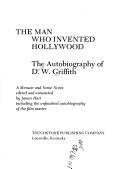
ISBN: 0879630019 9780879630010 Year: 1972 Publisher: Louisville, Ky. Touchstone Pub. Co.
Abstract | Keywords | Export | Availability | Bookmark
 Loading...
Loading...Choose an application
- Reference Manager
- EndNote
- RefWorks (Direct export to RefWorks)
film --- filmgeschiedenis --- Verenigde Staten --- Hollywood --- filmregisseurs --- twintigste eeuw --- Griffith David Wark --- 791.471 GRIFFITH --- Motion picture industry --- Motion picture producers and directors --- History. --- Biography. --- Griffith, D. W. --- Hollywood (Los Angeles, Calif.) --- History --- Biography --- Griffit, Dėvid Uork, --- Griffith, David Wark, --- Warwick, Grenville,
Book
ISBN: 2858024194 Year: 1984 Publisher: Paris Publications de la Sorbonne / L'Harmattan
Abstract | Keywords | Export | Availability | Bookmark
 Loading...
Loading...Choose an application
- Reference Manager
- EndNote
- RefWorks (Direct export to RefWorks)
Griffith, D.W. --- Congresses --- Congrès --- Colloque international sous la direction de Jean Mottet --- film --- Verenigde Staten --- Griffith David Wark --- stille film --- westerns --- film en geschiedenis --- 791.471 GRIFFITH --- Congrès

ISBN: 0195026853 9780195026856 Year: 1980 Publisher: New York Oxford University Press
Abstract | Keywords | Export | Availability | Bookmark
 Loading...
Loading...Choose an application
- Reference Manager
- EndNote
- RefWorks (Direct export to RefWorks)
Motion picture producers and directors --- Producteurs et réalisateurs de cinéma --- Biography --- Biographies --- Griffith, D. W. --- film --- filmgeschiedenis --- twintigste eeuw --- Verenigde Staten --- Griffith D.W. --- filmregisseurs --- 791.471 GRIFFITH --- Producteurs et réalisateurs de cinéma --- Griffith D.W --- Griffit, Dėvid Uork, --- Griffith, David Wark, --- Warwick, Grenville, --- CDL
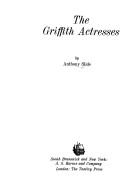
ISBN: 049801018X 9780498010187 0900730714 9780900730719 Year: 1973 Publisher: South Brunswick A.S. Barnes
Abstract | Keywords | Export | Availability | Bookmark
 Loading...
Loading...Choose an application
- Reference Manager
- EndNote
- RefWorks (Direct export to RefWorks)
Motion picture actors and actresses --- Acteurs et actrices de cinéma --- Biography. --- Biographies --- Griffith, D. W. --- film --- 791.471 GRIFFITH --- 791.472 AAAA --- Dempster Carol --- Seymour Clarine --- Cooper Miriam --- Marsh Mae --- Gish Dorothy --- Pickford Mary --- Sweet Blanche --- acteurs --- actrices --- stille film --- Griffith David Wark --- Verenigde Staten --- Acteurs et actrices de cinéma
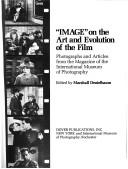
ISBN: 048623777X Year: 1979 Publisher: New York, NY : Dover,
Abstract | Keywords | Export | Availability | Bookmark
 Loading...
Loading...Choose an application
- Reference Manager
- EndNote
- RefWorks (Direct export to RefWorks)
ed. by Marshal Deutelbaum --- film --- stille film --- Image --- fotografie --- film en fotografie --- westerns --- Sweet Blanche --- Ince Thomas H. --- Badger Clarence --- DeMille Cecil B. --- Pickford Mary --- Griffith David Wark --- Vidor King --- Terry Alice --- Novarro Ramon --- Keaton Buster --- Lloyd Harold --- Mohr Hal --- Wong Howe James --- Riefenstahl Leni --- 791.43 --- 77.036 --- Motion picture plays --- Motion pictures --- DeMille Cecil B --- Ince Thomas H --- History and criticism --- History --- CINEMA --- ANTHOLOGIES --- PHOTOGRAPHIES
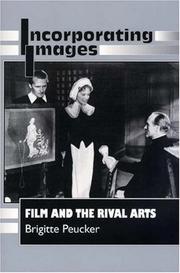
ISBN: 140086402X 0691600678 0691002819 9781400864027 Year: 2014 Publisher: Princeton Princeton University Press
Abstract | Keywords | Export | Availability | Bookmark
 Loading...
Loading...Choose an application
- Reference Manager
- EndNote
- RefWorks (Direct export to RefWorks)
Film, a latecomer to the realm of artistic media, alludes to, absorbs, and undermines the discourses of the other arts--literature and painting especially--in order to carve out a position for itself among them. Exposing the anxiety in film's relation to its rival arts, Brigitte Peucker analyzes central issues involved in generic boundary crossing as they pertain to film and situates them in a theoretical framework. The figure of the human body takes center stage in Peucker's innovative study, for it is through this figure that the conjunction of literary and painterly discourses persistently articulates itself. It is through the human body, too, that film's consciousness of itself as a hybrid text and as a "machine for simulation" makes itself deeply felt.In films ranging from Weimar cinema through Griffith, Hitchcock, and Greenaway, Peucker probes issues in aesthetics problematized by Diderot and Kleist, among others. She argues that the introduction of movement into visual representation occasioned by film brings with it an underlying tension suggestive of castration and death. Peucker goes on to demonstrate how the encounter between narrative and image is both gendered and sexualized, rendering film a "monstrous" hybrid. In a final section, she explores in specific cinematic texts the permeable boundary between the real and representation, suggesting how effects such as tableau vivant and trompe l'oeil figure sexuality and death.Originally published in 1995.The Princeton Legacy Library uses the latest print-on-demand technology to again make available previously out-of-print books from the distinguished backlist of Princeton University Press. These editions preserve the original texts of these important books while presenting them in durable paperback and hardcover editions. The goal of the Princeton Legacy Library is to vastly increase access to the rich scholarly heritage found in the thousands of books published by Princeton University Press since its founding in 1905.
#SBIB:309H1321 --- Brigitte Peucker --- film en literatuur --- Wiene Robert --- film en feminisme --- Films met een amusementsfunctie en/of esthetische functie: algemeen --- Motion pictures and the arts --- Motion pictures --- 791.41 --- film --- film en psychoanalyse --- film en schilderkunst --- filmtheorie --- gender studies --- Greenaway Peter --- Griffith David Wark --- Hitchcock Alfred --- Lang Fritz --- 791.43 --- 791.43 Filmkunst. Films. Cinema --- Filmkunst. Films. Cinema --- Aesthetics --- Arts and motion pictures --- Moving-pictures and the arts --- Arts --- Motion pictures and the arts. --- Aesthetics. --- PERFORMING ARTS / Film & Video / History & Criticism.
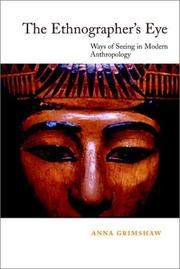
ISBN: 0521774756 0521773105 0511049838 0511817673 0511153406 9780521774758 Year: 2001 Publisher: Cambridge : Cambridge University Press,
Abstract | Keywords | Export | Availability | Bookmark
 Loading...
Loading...Choose an application
- Reference Manager
- EndNote
- RefWorks (Direct export to RefWorks)
Grimshaw's exploration of the role of vision within modern anthropology engages with current debates about ocularcentism, investigating the relationship between vision and knowledge in ethnographic enquiry. Using John Berger's notion of 'ways of seeing', the author argues that vision operates differently as a technique and theory of knowledge within the discipline. In the first part of the book she examines contrasting visions at work in the so-called classical British school, reassessing the legacy of Rivers, Malinowski and Radcliffe-Brown through the lens of early modern art and cinema. In the second part of the book, the changing relationship between vision and knowledge is explored through the anthropology of Jean Rouch, David and Judith MacDougall, and Melissa Llewelyn-Davies. Vision is foregrounded in the work of these contemporary ethnographers, focusing more general questions about technique and epistemology whether image-based media are used or not in ethnographic enquiry.
#SBIB:39A8 --- Antropologie: linguïstiek, audiovisuele cultuur, antropologie van media en representatie --- Anna Grimshaw --- film en etnografie --- visuele antropologie --- Rivers W.H.R. --- Flaherty Robert --- Grierson John --- MacDougall David --- MacDougall Judith --- Llewelyn-Davies Melissa --- Visual anthropology. --- Visual anthropology --- Ethnology --- 391 --- 791.41 --- 791.43 --- antropologie --- documentaire --- etnografie --- film --- filmgeschiedenis --- filmtheorie --- Griffith David Wark --- kubisme --- kunst --- modernisme --- Rivers W.H.R --- Rouch Jean --- twintigste eeuw --- Social Sciences --- Anthropology
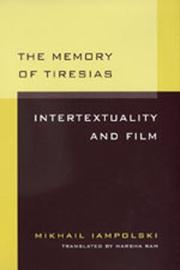
ISBN: 0520085299 0520085302 0520914724 0585228442 9780520914728 9780585228440 9780520085299 9780520085305 Year: 1998 Publisher: Berkeley : University of California Press,
Abstract | Keywords | Export | Availability | Bookmark
 Loading...
Loading...Choose an application
- Reference Manager
- EndNote
- RefWorks (Direct export to RefWorks)
The concept of intertextuality has proven of inestimable value in recent attempts to understand the nature of literature and its relation to other systems of cultural meaning. In The Memory of Tiresias, Mikhail Iamposlki presents the first sustained attempt to develop a theory of cinematic intertextuality.Building on the insights of semiotics and contemporary film theory, Iampolski defines cinema as a chain of transparent, mimetic fragments intermixed with "ations he calls "textual anomalies." These challenge the normalization of meaning and seek to open reading out onto the unlimited field of cultural history, which is understood in texts as a semiotically active extract, already inscribed.Quotations obstruct mimesis and are consequently transformed in the process of semiosis, an operation that Iampolski defines as reading in an aura of enigma. In a series of brilliant analyses of films by D.W. Griffith, Sergei Eisenstein, and Luis Buñuel, he presents different strategies of intertextual reading in their work. His book suggests the continuing centrality of semiotic analysis and is certain to interest film historians and theorists, as well as readers in cultural and literary studies.
Literary semiotics --- Film --- Motion pictures. --- Intertextuality. --- Motion pictures --- Intertextuality --- Music, Dance, Drama & Film --- 82:791.43 --- film --- filmtheorie --- intertekstualiteit --- semiotiek --- Griffith David Wark --- Eisenstein Sergei --- Bunuel Luis --- Cendrars Blaise --- Léger Fernand --- Dali Salvador --- Tynianov Iurii --- 791.41 --- 82:791.43 Literatuur en film --- Literatuur en film --- Cinéma --- Théorie du cinéma --- Intertextualité --- Récit filmique --- Esthétique --- Cinema --- Feature films --- Films --- Movies --- Moving-pictures --- Audio-visual materials --- Mass media --- Performing arts --- Criticism --- Semiotics --- Influence (Literary, artistic, etc.) --- History and criticism --- Intertextualité. --- Théorie du cinéma. --- Récit filmique. --- Esthétique.
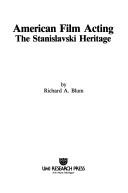
ISBN: 0835715906 9780835715904 0835716090 9780835716093 Year: 1984 Publisher: Ann Arbor UMI Research Press
Abstract | Keywords | Export | Availability | Bookmark
 Loading...
Loading...Choose an application
- Reference Manager
- EndNote
- RefWorks (Direct export to RefWorks)
Film --- Acting --- Stanislavsky, Constantin --- United States --- Motion picture acting. --- Method acting. --- Motion pictures --- #SBIB:309H1322 --- Film acting --- Moving-picture acting --- History. --- Films met een amusementsfunctie en/of esthetische functie: acteurs --- American cinema films --- Influence of theories of training actors of Stanislavskiı̆, K --- S. --- Richard A. Blum --- film --- acteerkunst --- acteurs --- actrices --- Stanislavski Constantin --- Hollywood --- Boleslavsky Richard --- Ouspenskaya Maria --- Strasberg Lee --- Group Theatre --- American Lab Theatre --- Kazan Elia --- Actor's Studio --- Actor's Studio West --- Brando Marlon --- Dean James --- Moscow Art Theatre --- Nazimowa Alla --- Belasco David --- Griffith David Wark --- 791.472 --- Method acting --- Motion picture acting --- Method (Acting) --- Stanislavsky method --- History --- United States of America
| Listing 1 - 10 of 22 | << page >> |
Sort by
|

 Search
Search Feedback
Feedback About
About Help
Help News
News